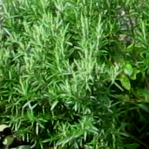Plants in a Typical Italian Herb Garden

I can think of no better place to turn for inspiration for growing your own herbs than to Italy. Emulating an Italian herb garden can offer a variety of possibilities, both for beauty and for taste. Italian cuisine, famous around the world, is amongst the best and easiest to copy, and the herbs you use will help to replicate their tastiest dishes.
Essential to many Italian recipes is Basil. A useful herb, not only for its flavour but beneficial to other plants in the garden too. The taste of peppers and tomatoes can be improved by planting basil amongst them. It can even help to repel flies and mosquitoes. A great plus is that you can always have a small pot of this wonderfully aromatic herb on a sunny windowsill.
Garlic is amongst the most versatile and used herbs in the Italian kitchen -an essential for an Italian herb garden. Garlic requires very little attention, will grow almost anywhere and is very easy to store after harvesting. It can be strung like onions, frozen or pickled.
Parsley too is amongst the ‘must have’ herbs in almost every type of cuisine as well as Italian. Reputed to be relatively difficult to grow, it is really a matter of giving it careful attention whilst young. Once on its way it is as robust as any tender- leafed plant, lasting well into the colder months. In England it is held that the person who grows the parsley in a household ‘Wears the Trousers’ – a euphemism for ‘being in charge’ – often quoted by the parsley grower! Traditionally used as a breath freshener and stomach settler this herb adds freshness and flavour to many simply prepared dishes.
The pretty little purple flowers of Oregano are a delight to behold. They are the signal that it will soon be harvest time! This plant is at its most flavourful after flowering. There are varieties that will withstand considerable cold outdoors and its relative, Marjoram, comes with green, yellow or variegated leaves and is tasty too when fresh.
Rosemary is a well known Italian herb. An attractive large evergreen shrub – it can be cut to make formal shapes or even used as hedging. It is good for your garden as the bees just love it! Although rosemary can be sensitive to frost mine has survived temperatures of -9ºC ( -15ºF)
Sage will enhance both your meat dishes and the salads that accompany them. The best flavour is obtained from the leaves of young shoots. They should be cut after flowering to encourage new shoots and to prevent the plant from becoming ‘leggy’. The stems can become woody so the plant is at its most attractive when kept fairly compact.
Fennel seeds are used in Italian sausage. It is a beautiful statuesque plant with curious leaves that resemble a cloud. There is a purple leaved variety that is truly stunning. This perennial should be divided every few years to retain its full flavour
.
The Beauty of an Italian Herb Garden
Herbs work very well in a ornamental garden too. They will attract beneficial insects and often repel harmful ones. For instance, the strong scent of lavender planted under rose bushes will help to keep the greenfly away. They can complement other plants and provide background as well as be features in their own right. The variety of leaf shape and colour can offer endless contrast and harmony to the design of your garden and some give a haze of colour when in flower ranging from purple and blue to soft yellow. A stroll through your garden will delight your senses with sweet aromas and visual excitement – transporting you to the hillsides of Italy!
The herbs included above will certainly get you well on the way to keeping your kitchen supplied with useful herbs for many a dish of almost every nationality. These are plants that are easy to grow and many are suitable when you are considering growing herbs in pots but is by no means the complete range. An attempt to name every herb which would be appropriate in an Italian herb garden would make a long list.